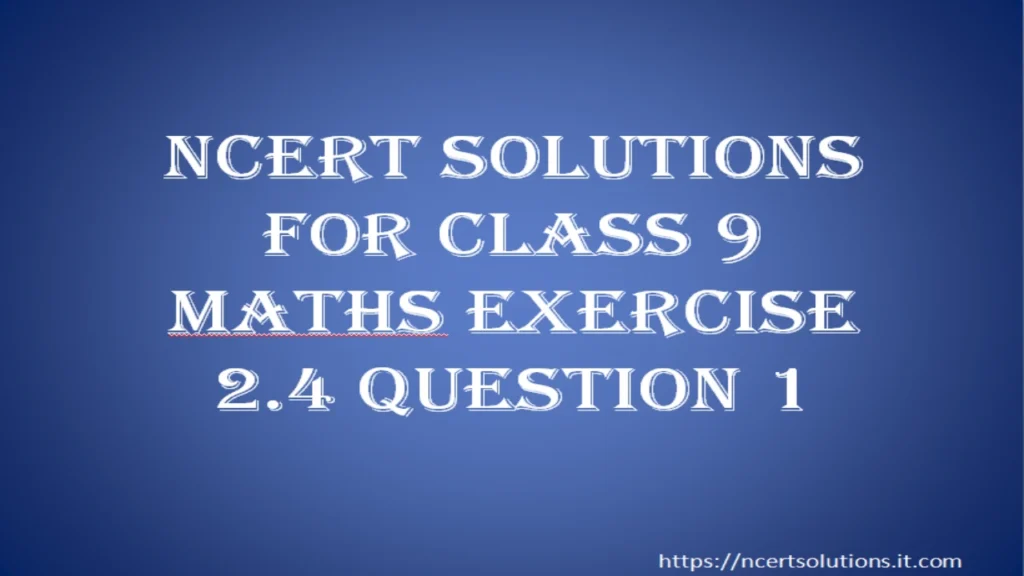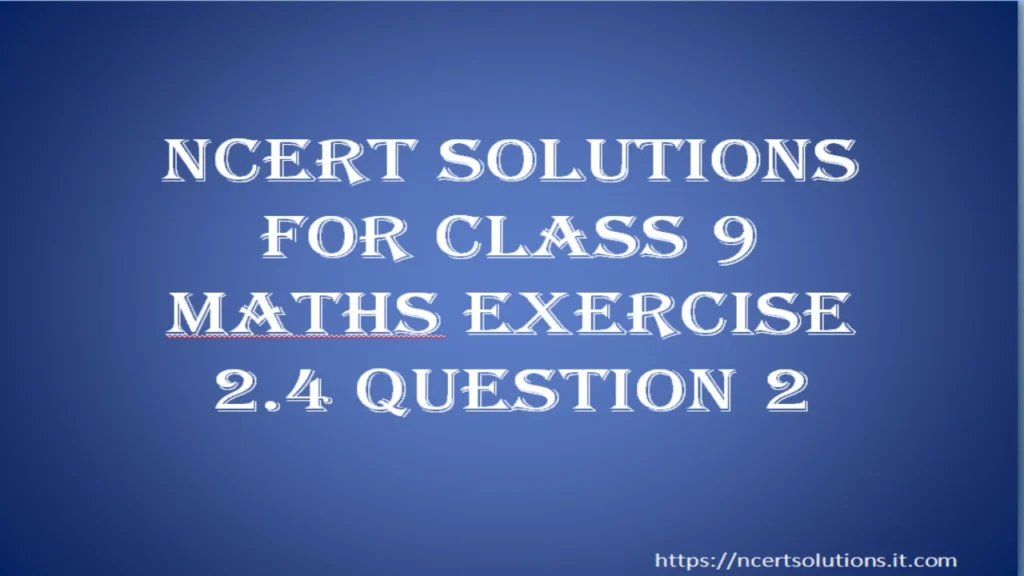NCERT Solutions for Class 9 Maths Exercise 2.4 Question 9

Understanding the Question 🧐
In this question, we are asked to **verify** two very important algebraic identities. “Verifying” means we need to prove that the Left Hand Side (LHS) of the equation is equal to the Right Hand Side (RHS). The standard method is to start with the more complicated side (in this case, the RHS) and simplify it step-by-step until it becomes identical to the simpler side (LHS). These ncert solutions will demonstrate this process clearly.
Verify:
(i) &&x^3 + y^3 = (x+y)(x^2 – xy + y^2)&&
(ii) &&x^3 – y^3 = (x-y)(x^2 + xy + y^2)&&
Part (i): Verifying the Sum of Cubes Identity 📝
We need to prove that &&x^3 + y^3 = (x+y)(x^2 – xy + y^2)&&.
Step 1: Start with the Right Hand Side (RHS)
Let’s take the RHS of the equation:
RHS = &&(x+y)(x^2 – xy + y^2)&&
Step 2: Expand the expression using the distributive property
We will multiply the first term, &&x&&, by the entire second expression, and then multiply the second term, &&y&&, by the entire second expression.
RHS = &&x(x^2 – xy + y^2) + y(x^2 – xy + y^2)&&
Step 3: Perform the multiplication for each term
&&= (x \cdot x^2 – x \cdot xy + x \cdot y^2) + (y \cdot x^2 – y \cdot xy + y \cdot y^2)&&
&&= (x^3 – x^2y + xy^2) + (x^2y – xy^2 + y^3)&&
Step 4: Combine the like terms
Now, we group similar terms together. Notice how some terms will cancel each other out.
&&= x^3 \underbrace{- x^2y + x^2y}_{\text{cancels out}} \underbrace{+ xy^2 – xy^2}_{\text{cancels out}} + y^3&&
&&= x^3 + 0 + 0 + y^3&&
&&= x^3 + y^3&&
Step 5: Conclude the verification
The simplified RHS is &&x^3 + y^3&&, which is exactly the same as the LHS.
Thus, LHS = RHS. The identity is verified.
Part (ii): Verifying the Difference of Cubes Identity 📝
Here, we need to prove that &&x^3 – y^3 = (x-y)(x^2 + xy + y^2)&&.
Step 1: Start with the Right Hand Side (RHS)
Let’s take the RHS:
RHS = &&(x-y)(x^2 + xy + y^2)&&
Step 2: Expand the expression
We multiply &&x&& by the second expression, and then &&-y&& by the second expression.
RHS = &&x(x^2 + xy + y^2) – y(x^2 + xy + y^2)&&
Step 3: Perform the multiplication
Be careful when distributing the negative sign for the second part.
&&= (x^3 + x^2y + xy^2) – (y \cdot x^2 + y \cdot xy + y \cdot y^2)&&
&&= (x^3 + x^2y + xy^2) – (x^2y + xy^2 + y^3)&&
&&= x^3 + x^2y + xy^2 – x^2y – xy^2 – y^3&&
Step 4: Combine the like terms
Again, we group similar terms and see them cancel out.
&&= x^3 \underbrace{+ x^2y – x^2y}_{\text{cancels out}} \underbrace{+ xy^2 – xy^2}_{\text{cancels out}} – y^3&&
&&= x^3 + 0 + 0 – y^3&&
&&= x^3 – y^3&&
Step 5: Conclude the verification
The simplified RHS is &&x^3 – y^3&&, which is identical to the LHS.
Thus, LHS = RHS. The identity is verified.
- Same: The sign in the first bracket is the same as the sign in the original expression (e.g., &&x^3 + y^3&& starts with &&(x+y)&&).
- Opposite: The sign of the middle term in the second bracket is opposite to the original sign (e.g., for &&x^3 + y^3&&, the term is &&-xy&&).
- Always Positive: The last term in the second bracket is always positive (&&+y^2&&).
- Sum of Cubes: &&x^3 + y^3 = (x+y)(x^2 – xy + y^2)&&
- Difference of Cubes: &&x^3 – y^3 = (x-y)(x^2 + xy + y^2)&&
- Verification is a proof. Start with the more complex side (usually the factored form) and simplify it to match the other side.
FAQ
Q: What does it mean to ‘verify’ an algebraic identity?
A: To verify an identity means to prove that the expression on the Left Hand Side (LHS) is always equal to the expression on the Right Hand Side (RHS). This is usually done by simplifying one side of the equation until it looks identical to the other side.
Q: What is the general strategy for verifying these identities?
A: The best strategy is to start with the more complex side, which is the Right Hand Side (RHS) in this case. By expanding the product on the RHS and simplifying it, we can show that it equals the simpler Left Hand Side (LHS).
Q: What is the formula for the sum of two cubes, &&x^3 + y^3&&?
A: The formula for the sum of two cubes is &&x^3 + y^3 = (x+y)(x^2 – xy + y^2)&&.
Q: What is the formula for the difference of two cubes, &&x^3 – y^3&&?
A: The formula for the difference of two cubes is &&x^3 – y^3 = (x-y)(x^2 + xy + y^2)&&.
Q: How can I remember the signs in the sum and difference of cubes formulas?
A: You can use the mnemonic ‘SOAP’: Same, Opposite, Always Positive. The first sign in the factored form is the SAME as the original expression. The second sign is the OPPOSITE. The final sign is ALWAYS POSITIVE.
Q: What is a common mistake when verifying the &&x^3 – y^3&& identity?
A: A common mistake is incorrectly distributing the negative sign when expanding the RHS. When you multiply &&-y&& by &&(x^2 + xy + y^2)&&, all the resulting terms become negative: &&-x^2y – xy^2 – y^3&&.
Further Reading
For more details on polynomial identities, refer to the official NCERT Class 9 Maths textbook on their website: https://ncert.nic.in/


